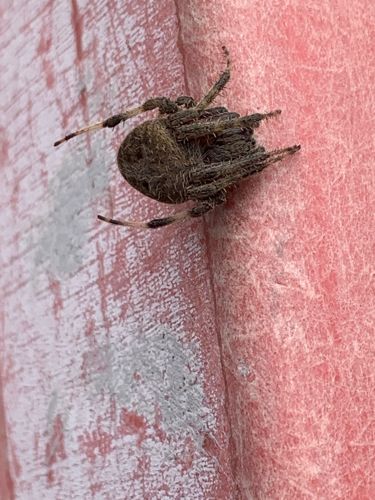Orb Weaver Spider (likely a species of Araneus or Neoscona)
Scientific Name: Araneidae (family level, specific genus/species is hard to determine from this image alone but has characteristics of Araneus or Neoscona)
Order & Family: Order: Araneae, Family: Araneidae
Size: Females typically range from 5 mm to 20 mm in body length (excluding legs), with males usually being significantly smaller.

Natural Habitat
Orb weavers are found in a variety of habitats, including gardens, forests, fields, and around human structures. They prefer areas with vegetation or structures to build their webs, often in open spaces between plants or on the eaves of buildings.
Diet & Feeding
Strictly carnivorous, feeding on insects and other small invertebrates that get caught in their webs. They paralyze their prey with venom and then wrap them in silk before consuming or storing them.
Behavior Patterns
Orb weavers are known for constructing intricate, circular (orb-shaped) webs, often at night. They typically sit in the center of their web or hide nearby, awaiting prey. They are generally solitary. Many species dismantle their webs at dawn and rebuild them at dusk.
Risks & Benefits
Risks: Orb weaver spiders are generally not considered dangerous to humans. Their venom is not potent enough to cause serious harm, and bites are rare, usually only occurring if the spider feels threatened or is squeezed. A bite might result in mild pain, redness, and swelling, similar to a bee sting. Benefits: They are beneficial predators, helping to control populations of various insect pests in gardens and agricultural settings, contributing to ecological balance.
Identified on: 9/20/2025